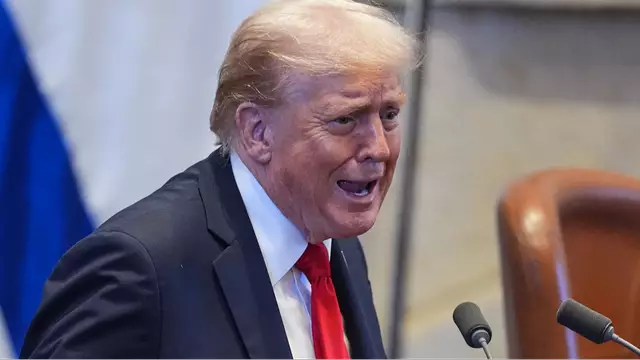Donald Trump TIME Cover: Stunning Yet Worst Image Debate
President Donald Trump has expressed strong dissatisfaction with the photograph TIME magazine chose to feature on its cover depicting his recent diplomatic efforts in the Middle East. The image, which immortalizes his return from Israel and Egypt following a landmark peace agreement, has drawn harsh criticism from Trump himself, who labeled it as the “worst image of all time.” This controversy unfolds against the backdrop of Trump’s pivotal involvement in brokering a ceasefire deal between Israel and Hamas, a significant development welcomed by many global leaders.
The Context Behind the Controversial TIME Magazine Cover

On October 13, 2024, the 79-year-old former president traveled to Sharm el-Sheikh, Egypt, to participate in a high-profile summit aimed at promoting peace in Gaza. Joined by 20 leaders from countries including Egypt, Qatar, and Turkey, Trump signed an important declaration intended to stabilize the volatile Gaza Strip. This diplomatic mission was the culmination of efforts that began with his visit to Israel to oversee the release of hostages under the ceasefire agreement.
The ceasefire itself represented a breakthrough in a long-standing conflict. As part of the agreement, Israel agreed to release 250 Palestinian prisoners serving life sentences and an additional 1,700 Gazans detained since October 7, 2023, in exchange for the cessation of hostilities. Trump, known for touting his negotiation skills, told the BBC, “I’m good at solving wars. I’m good at making peace,” underscoring his belief in his own effectiveness as a peace broker.
TIME Magazine’s Portrayal of Trump’s Middle East Triumph
Following these diplomatic successes, TIME magazine honored Trump with a cover story captioned “Triumph,” which highlights how the Republican administration “sealed” the Gaza ceasefire deal. The article celebrates the efforts of key figures around Trump, including envoy Steve Witkoff and Jared Kushner—his son-in-law and former senior advisor—emphasizing the complex and “painstaking efforts” they undertook to bring peace to a region fraught with conflict.
The cover image, however, diverges from the positive tone of the article. It is a low-angle photograph of Trump outdoors, dressed in his characteristic navy blue suit paired with a red tie. Despite the photo’s dramatic style presumably meant to evoke strength and leadership, Trump took issue with how he looked. On his social media platform Truth Social, he described the image as “super bad” and claimed it deserved to be called out.
Why Donald Trump Dislikes the TIME Cover Photo
Trump’s primary complaint centered on the photo’s angle and how it depicted him physically. “They ‘disappeared’ my hair,” he wrote, criticizing what he called an odd visual effect that made it appear as if a “floating crown” hovered above his head, albeit “an extremely small one.” He expressed clear discomfort with photographs taken from “underneath angles,” suggesting they are unflattering and can distort a subject’s appearance.
Despite calling the accompanying TIME article “relatively good,” Trump’s focus remained fixed on the image itself, questioning the magazine’s motives with “What are they doing, and why?” This reaction reflects a long-standing, sometimes contentious relationship between Trump and TIME magazine—a publication that has both praised and provoked him over the years.
Trump’s History with TIME Magazine Covers and Honors
Donald Trump’s complicated relationship with TIME dates back decades. He first appeared on the magazine’s cover in 1989 and has been named Person of the Year twice. In 2016, when he was chosen as Person of the Year during his initial presidential campaign, Trump described it as a “tremendous honor,” recognizing the magazine’s cultural significance.
More recently, he was once again featured on the cover in 2024, this time ahead of other prominent figures such as Kamala Harris, Elon Musk, and Benjamin Netanyahu. TIME lauded him for orchestrating “a comeback of historic proportions,” reshaping American politics, and redefining the United States’ role on the world stage. Yet, Trump’s feedback hasn’t always been complimentary; in 2015, he publicly decried TIME’s decision to name Angela Merkel Person of the Year instead of him and called the magazine’s list of 100 Most Influential People a “joke” in 2013.
The Broader Significance of the Middle East Peace Deal
Beyond the media spat, the ceasefire agreement and peace declaration signed in Egypt represent a potential turning point in Middle Eastern geopolitics. The involvement of diverse regional actors highlights the collective desire to stabilize the area and prevent further escalation. Whether this initiative will endure remains to be seen, but Trump’s role in helping facilitate the agreement is a notable chapter in his post-presidential career.
In conclusion, the coverage of Donald Trump’s recent diplomatic efforts by TIME magazine has stirred a mixture of admiration and controversy. While the outlet praised the significance of the peace deal and Trump’s involvement, the former president’s disdain for the chosen cover image reminds us of the complex and often contentious relationship between public figures and the media. As peace efforts continue, so too will the scrutiny and commentary that accompany high-stakes political drama.